| The Sagittarius "Teapot", from Spain, 2007 |
|
|
To many, the constellation of Sagittarius looks more like a teapot than an archer. This image shows the main stars of that constellation, together with some milky way star clouds as "steam" rising from the spout.
It shows the dense population of stars in the centre of our galaxy, and several Messier objects, including the large cloud M25, and just at the bottom corner, the open cluster M7.
This photo was created from a stack of 31x30-second images photographed with my Canon EOS300D camera set to ISO 1600, using the standard 18-55mm lens set at 42mm, f/5.0. The conversion from RAW format and stacking was done using Deep Sky Stacker and post processing was done in Pleiades PixInsight LE and The Gimp.
|
| to top |
|
|
| Scorpius and the Milky Way, with Jupiter, from Spain, 2007 |
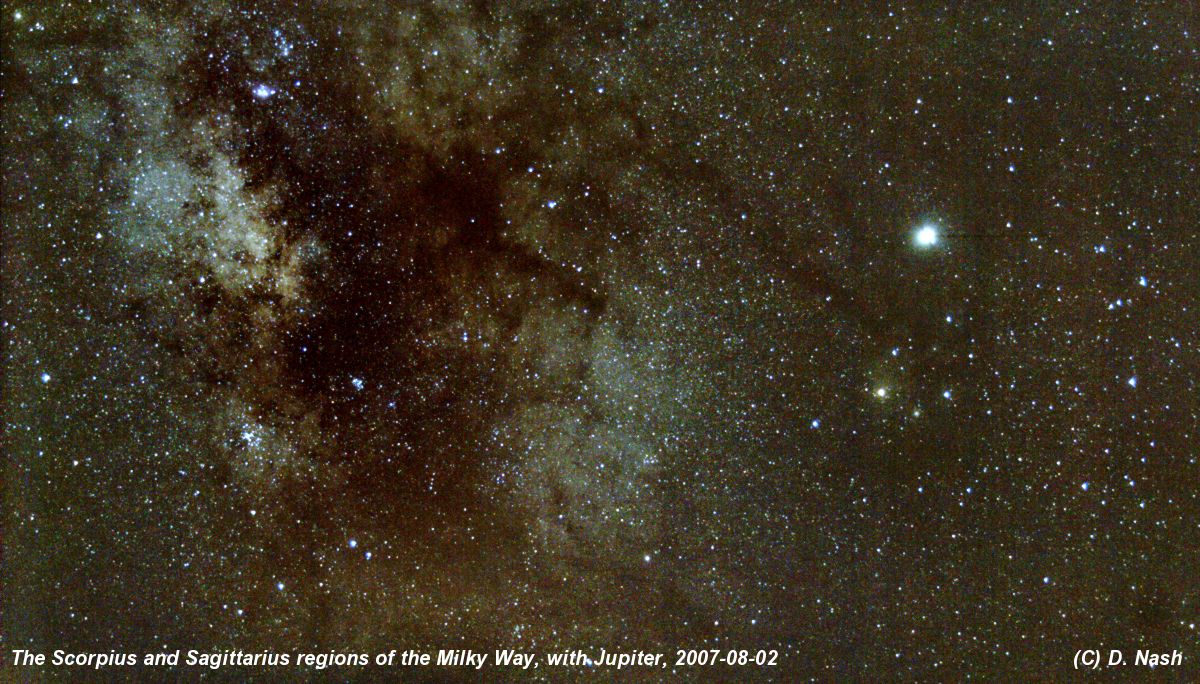
|
This picture was taken the day following the one below, and also shows Scorpius with Jupiter and the Milky Way. See the image below for identifications of the objects in the image.
This image is a stack of 22 30-second exposures, made using my Canon EOS 300D, set to ISO 1600. The standard kit 18-55mm lens was used, set to 33mm, f/4.5. The pictures were stacked using Deep Sky Stacker and post-processed in Pleiades PixInsight LE and The Gimp.
- For closer views of the M6, M7, and M8 area, click HERE.
- A smaller version is HERE,
- and for the M8 and M20 area click HERE.
|
| to top |
|
|
| Scorpius and the Milky Way, with Jupiter, from Spain, 2007 |
|
|
In summer 2007 I made my annual visit to Spain and photographed the southern constellations that are not easily seen from home. This picture shows the constellation of Scorpius, the scorpion, which this year is graced by a visitor in the shape of Jupiter. The picture shows the milky way and several deep-sky objects too.
Move the mouse over the picture to see the annotated version showing the constellation and its stars labelled, and other objects of interest. Click the picture or here to see the annotated image on its own.
The light areas at the bottom of the picture are the result of light pollution from street lighting in villages nearby. They are not unusual Milky Way objects!
This image is a stack of 36 30-second exposures, made using my Canon EOS 300D, set to ISO 1600. The standard kit 18-55mm lens was used, set to the widest (18mm) angle. The pictures were stacked using Deep Sky Stacker and post-processed in Pleiades PixInsight LE and The Gimp.
|
| to top |
|
|
| The summer Milky Way from Spain, 2006 |

|
This image is a composite of three pictures showing the milky way as it arcs across the sky from Sagittarius in the south (right) through Cygnus overhead, and on to Cassiopeia (on the left). Move the mouse over the picture to see the annotated version showing the constellations (marked in yellow), the "summer triangle" (in white) and some deep-sky objects that were visible with the unaided eye from this location (marked in green). Click the picture or here to see the annotated image on its own.
Each of the three pictures that made up this motage is a stack of 20x20 seconds captured with my Canon EOS 300D set to ISO 1600. The lens was the standard 18-55mm zoom lens set to 18mm at f/3.5. The pictures were stacked in K3CCDTools and processed in Pleiades PixInsight LE and The Gimp.
|
| to top |
|
|
| Sagittarius from Spain, 2005 |
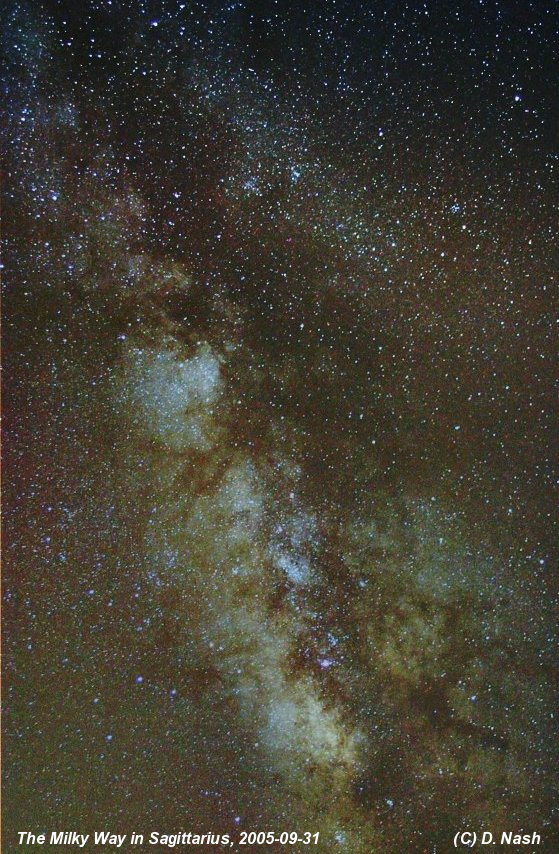
|
At the time of capturing, this was my best picture to date of our galaxy. The frames were captured in Spain under a very dark sky. The sky, plus the more southerly location meant that I could capture much better images of the centre of our galaxy than at home (compare with those further below).
This image is a stack of 4 shots: 1x30 sec, 2x120sec, and 1x180sec, captured with my Canon EOS 300D set to ISO 800. They were stacked in K3CCDTools and processed in Pleiades PixInsight LE and The Gimp.
|
| to top |
|
|
| Looking South |
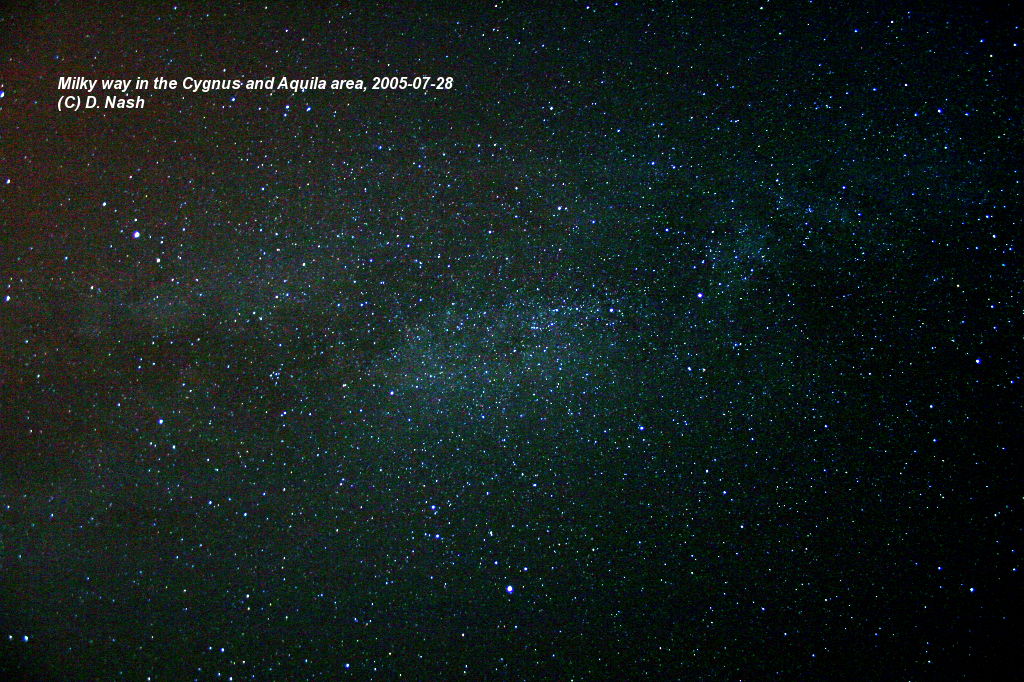
|
|
This picture shows the Milky Way in Aquila and Cygnus, and includes the constellations of Saggita, Vulpecula, Lyra, and Delphinus. About a quarter of the way from the left, Brocchi's cluster - the Coathanger - can be seen.
This picture is a stack of three photos taken with the Canon EOS 300D DSLR mounted on an undriven tripod. Each was 20 seconds at ISO 1600. The Lens was set to 18mm (its widest field of view) at f/3.5.
|
| to top |
|
|
| Looking North |
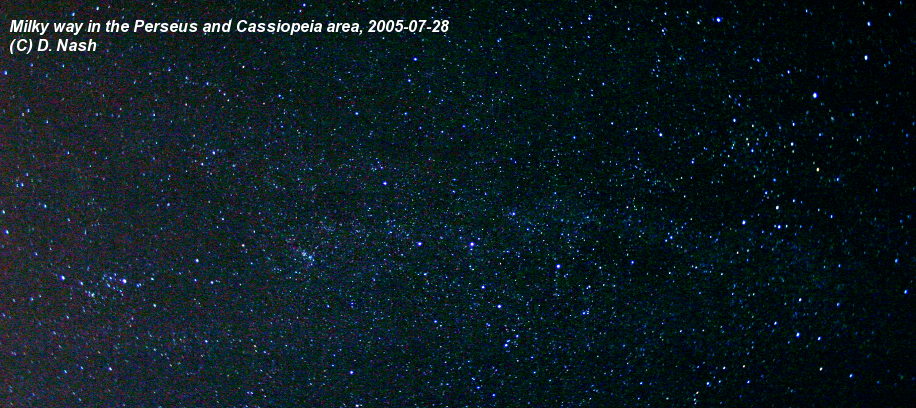
|
|
This is a picture of the Milky Way running through the constellations of Perseus(far left), Cassiopeia, and Cepheus (top right). About a third of the way from the left the Double Cluster can be seen, near the 'W' shape of Cassiopeia, which is near the centre of the picture.
This picture is a stack of three photos taken with the Canon EOS 300D DSLR mounted on an undriven tripod. Each was 20 seconds at ISO 1600. The Lens was set to 18mm (its widest field of view) at f/3.5.
|
| to top |
|
|
| The Milky Way in Aquila |
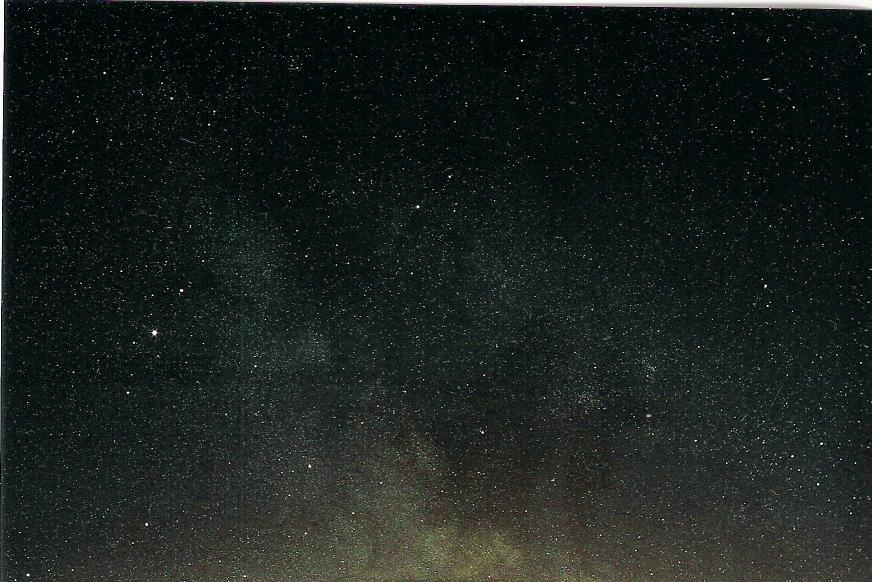
|
This picture shows part of the milky way showing the constellations of Aquila, Sagitta, Vulpecula and part of Cygnus. The "coathanger" asterism can be seen near the top of the picture.
The exposure was 15 minutes on Fuji 400 ASA film. The print was scanned then colour balanced in the Gimp.
|
| to top |
|
|
| The Milky Way in Cygnus |
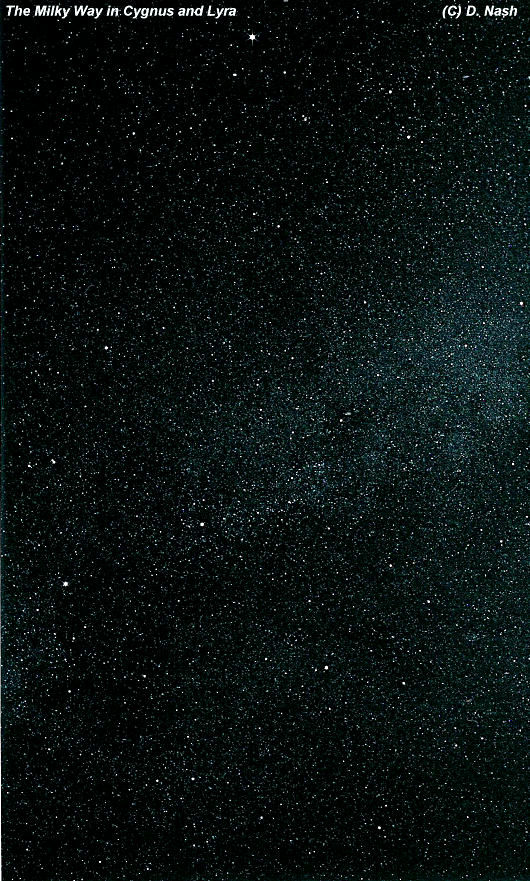
|
This photo is of a part of the milky way showing the constellations of Cygnus and Lyra. The bright star near the top is Vega, and the one near the left is Deneb.
It was taken using an old-fashioned SLR film camera, using a 50mm lens at f5.6. The exposure was 10 minutes on Fuji 400 ASA film. The print was scanned then colour balanced in the Gimp.
|
| to top |
|
|
